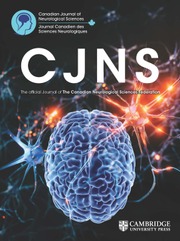No CrossRef data available.
Article contents
P.123 Decoding the brachial plexus : from fundamentals to advances - anatomy, imaging and pathologies
Published online by Cambridge University Press: 10 July 2025
Abstract
Background: The brachial plexus provides motor and somatosensory innervation to the upper limb and upper chest. Evaluation of brachial plexus disease is based on history, physical examination etc but imaging plays an important role for lesion localization, characterization and its classification. Effective reporting of imaging findings requires that neuroradiologist should be familiar with the brachial plexus anatomy, relevant landmarks, the spectrum and categories of brachial plexopathies. All above objectives will be discussed in this oral presentation. Methods: Normal brachial plexus anatomy is assumed for five anatomic landmarks: neural foramen, interscalene triangle, lateral border of the first rib, medial border of the coracoid process, and lateral border of the pectoralis minor corresponding to level of roots, trunks, divisions, cords and terminal branches. Conventional radiography has role in evaluating bony injuries. CT has limited role. MR used for comprehensive evaluation of the brachial plexus. Causes of brachial plexopathy are divided into traumatic and nontraumatic with specific features of each. Results: Imaging of brachial plexus is important part of treatment planning and rehabilitation of brachial plexopathies. Confident reporting can be done by knowing basics and injury patterns. Conclusions: Neuroradiologist should have sound knowledge of brachial plexus imaging in order to better contribute to pateint care.
Information
- Type
- Abstracts
- Information
- Copyright
- © The Author(s), 2025. Published by Cambridge University Press on behalf of Canadian Neurological Sciences Federation

